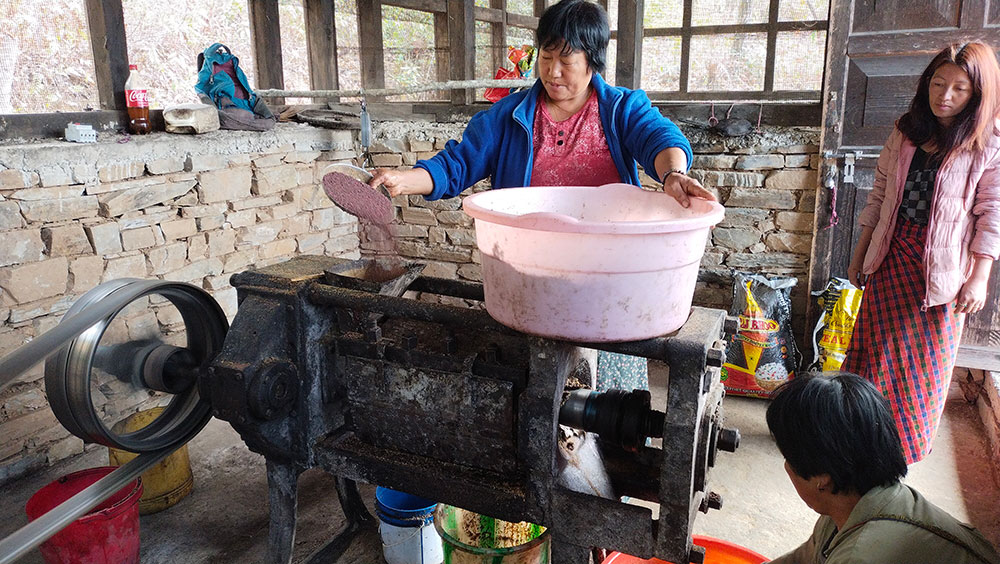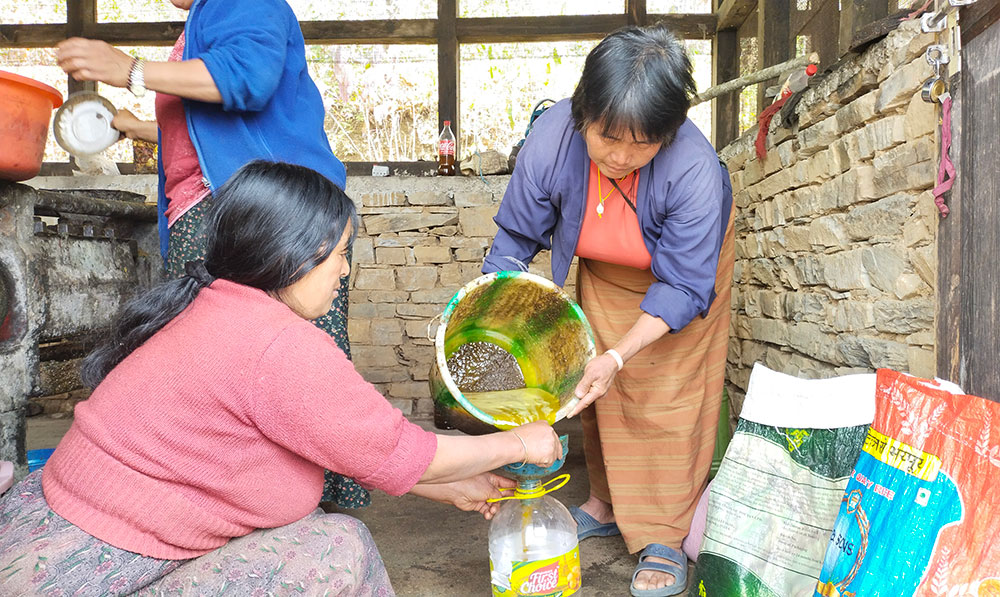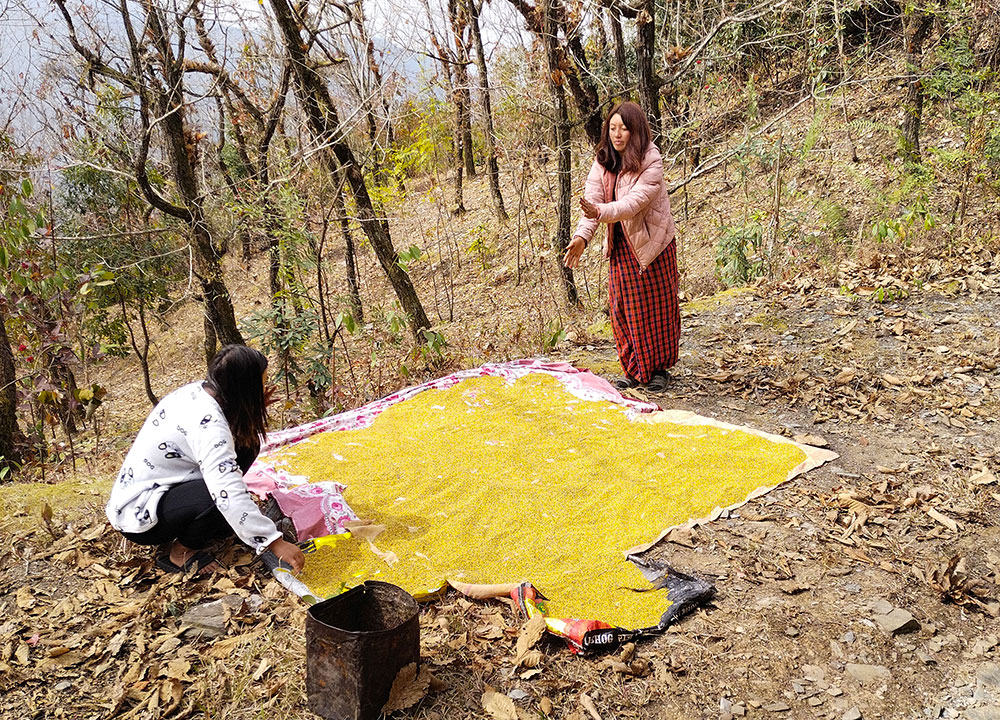Neten Dorji
Zheyjeymo, who is 50 years old, used to rely only on mustard oil made locally for cooking because she liked its taste. But now, she not only uses locally made mustard oil but also grows and makes her own.
After Zheyjeymo planted the mustard seeds and crushed them to make oil, many people from Lumang started growing mustard too. They aim to produce enough mustard oil locally to meet their needs without having to rely on outside sources.
Seeing the success of mustard cultivation in the gewog, the residents came together in 2015 to set up a mill. This mill was meant to process the mustard seeds they harvested. Their aim was to lessen their dependence on imported oil by using locally-grown mustard to fulfill their cooking needs.
Zheyjeymo noted, “As the prices of imported oil go up, more folks are extracting mustard oil for their own use.” She continued, “The mustard oil business is really taking off in the gewog. Every farmer is growing mustard and using press machines in the village to extract oil.”

Seeds are being heated and put into a pressing machine

Oil is filtered to remove any impurities
Chador Dema agrees, mentioning that everyone prefers pure organic products, especially when it comes to consuming local mustard oil products.
“Extracting oil isn’t too hard,” she said, “but it becomes challenging when the machine breaks down and needs fixing.” “It would motivate more farmers if the government could assist with providing new machines,” she added.
In the past, the absence of machinery for extracting oil discouraged farmers from participating in mustard oil production. The traditional method of producing oil was labor-intensive and time-consuming.
Given that more people were engaging in mustard oil extraction, establishing more oil extraction units in each gewog would greatly benefit communities.
“Instead of relying on imports, the government could promote mustard cultivation for oil extraction,” said a resident, Jigme Wangmo. “Most farmers in Lumang currently cultivate mustard because of the availability of the extraction mill.”
Other than mustard, maize, wheat, and barley were the primary crops cultivated by people in Lumang. While locals currently extracted mustard oil for self-consumption, it had the potential to become commercial. The locals cultivated two varieties of mustard—yellow mustard seeds and black mustard seeds.
Access to market was another challenge for the farmers, according to Tshering.
In the village, yellow mustard is primarily grown in the village. The first leaves of the mustard plant can be harvested three weeks after germination. The mustard seeds were dried for almost five weeks. The clean mustard seed was then heated and put in the pressing machine. Finally, it was filtered from the extracted oil to remove impurities.
“The left-over residue, also known as mustard seed oil cake, is used to feed the animals and plantations as it is rich in protein,” says Tshering Peldon, adding that mustard seed played a vital role not only for oil but also for animal feeds.
Lumang Gup, Sangay Gyeltshen, said that as people venture into mustard oil extractions, the gewog explores market opportunities.


